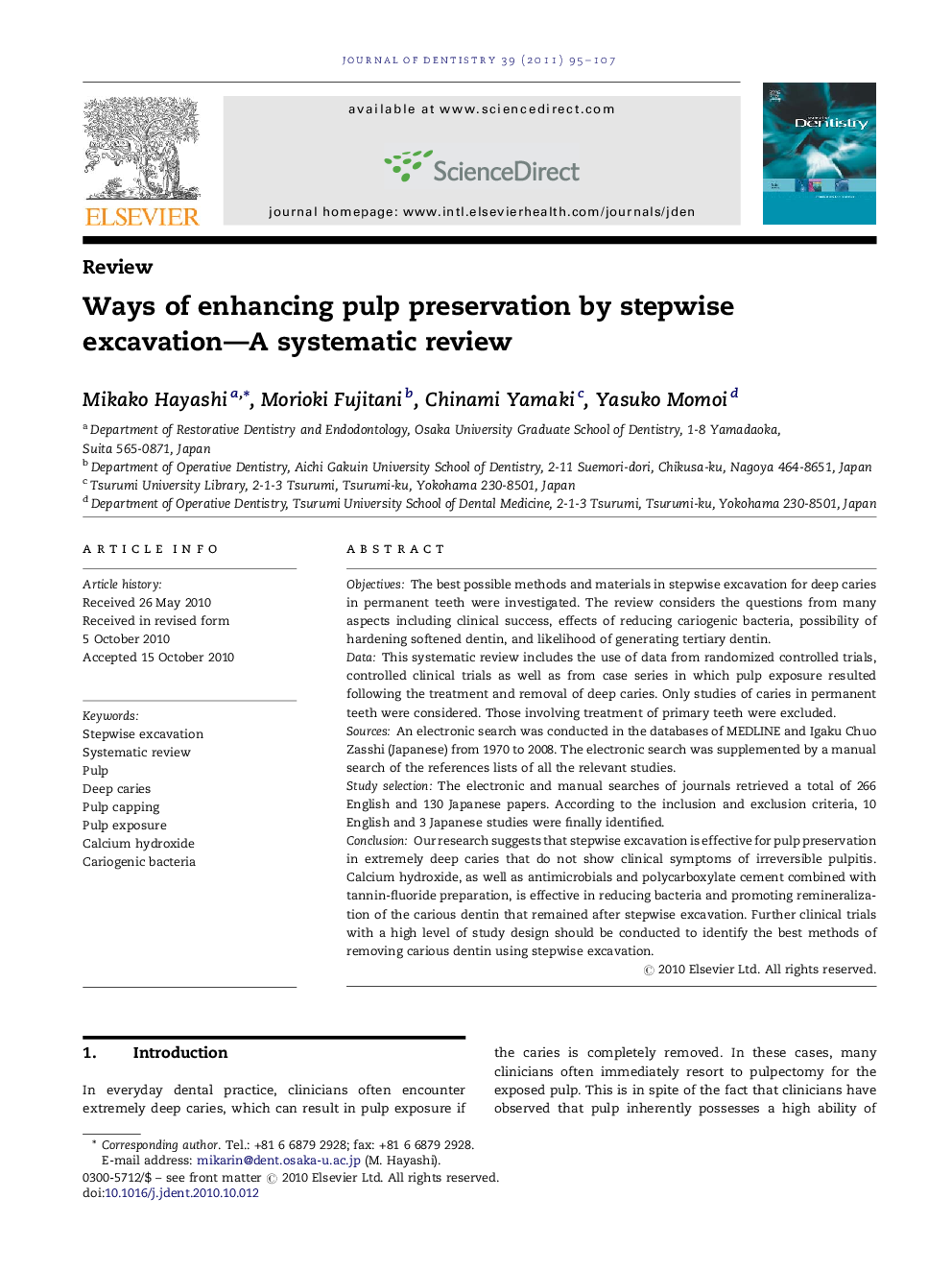| Article ID | Journal | Published Year | Pages | File Type |
|---|---|---|---|---|
| 3146310 | Journal of Dentistry | 2011 | 13 Pages |
ObjectivesThe best possible methods and materials in stepwise excavation for deep caries in permanent teeth were investigated. The review considers the questions from many aspects including clinical success, effects of reducing cariogenic bacteria, possibility of hardening softened dentin, and likelihood of generating tertiary dentin.DataThis systematic review includes the use of data from randomized controlled trials, controlled clinical trials as well as from case series in which pulp exposure resulted following the treatment and removal of deep caries. Only studies of caries in permanent teeth were considered. Those involving treatment of primary teeth were excluded.SourcesAn electronic search was conducted in the databases of MEDLINE and Igaku Chuo Zasshi (Japanese) from 1970 to 2008. The electronic search was supplemented by a manual search of the references lists of all the relevant studies.Study selectionThe electronic and manual searches of journals retrieved a total of 266 English and 130 Japanese papers. According to the inclusion and exclusion criteria, 10 English and 3 Japanese studies were finally identified.ConclusionOur research suggests that stepwise excavation is effective for pulp preservation in extremely deep caries that do not show clinical symptoms of irreversible pulpitis. Calcium hydroxide, as well as antimicrobials and polycarboxylate cement combined with tannin-fluoride preparation, is effective in reducing bacteria and promoting remineralization of the carious dentin that remained after stepwise excavation. Further clinical trials with a high level of study design should be conducted to identify the best methods of removing carious dentin using stepwise excavation.
